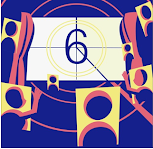Remember when user-generated content on social platforms was dominated by memes, dogs on skateboards, cats on keyboards, and one-off viral videos?
And if it seems like a long time ago that's because 10 to 15 years is an eternity in internet time.
Now, in the place of the random we have an actual sector called The Creator Economy, an industry filled with millions of people worldwide, producing content that encompasses new genres and new form factors and that mints new 'micro stars' every day. Some are participating for fun alone, others for profit, and if you can make your fun turn into profit, then you're probably winning life.
Once thought of as either frivolous or known to only those in the know or, alternately, people logging too much time online-- now digital creators *are* the media, driving the culture by using direct to consumer, on demand platforms like YouTube, Instagram, and TikTok. No conventional broadcaster or publisher permission needed, and nobody but the viewers themselves to decide what the definition of entertaining is.
To this point, in new research on teens and consumption habits respondents reported that they spend close to 30% of their viewing time on YouTube, exceeding the time spent on the professionally produced offerings on Netflix for the first time in this demographic segment.
When the platform companies first came on the scene few in the broadcast media industry considered the content posted on these gatekeeper-less sites to be a threat to their core business. After all, this was a bunch of amateurs, creating content about random topics and with little to no financial backing.
Now, in addition to the everyday people who can go from hobbyists to full timers on YouTube, Instagram, TikTok, and Twitch, we also have things like #BookTok, a community of readers, reviewers, and recommenders that find each other through the hashtag of the same name and that are reported to have accounted for over 175 billion views and tens of millions in sales in an industry that has been flagging in recent years.
These trends in media production, consumption, and perhaps most interestingly participation are quite clearly a huge departure from the world of broadcast media, with its pitching processes, high production and distribution costs, and fixed amount of shelf space.
And if you've got kids they may already be dabbling in digital creation, uploading to YouTube, TikTok, or SoundCloud and possibly hoping to become the next Mr. Beast, aka Jimmy Donaldson. And who wouldn't want to be Mr. Beast, with his 200M subscribers, a full production crew (including a 6-person thumbnail team), a reported $82 million in revenue last year, a line of branded clothing and snack foods, and charitable giving around the world including cataract surgeries for those in need.
There’s definitely a “so what’s going on?” question to be posed here. That question and others, such as what are your statistical chances of becoming the next Mr. Beast, are tackled in the Fall 2023 report I co-authored for the CMF (Canada Media Fund) entitled "Flipping The Screen".
 |
| Click here to read "Flipping The Screen", the Fall 2023 report from the CMF's Foresight & Innovation Team |


























